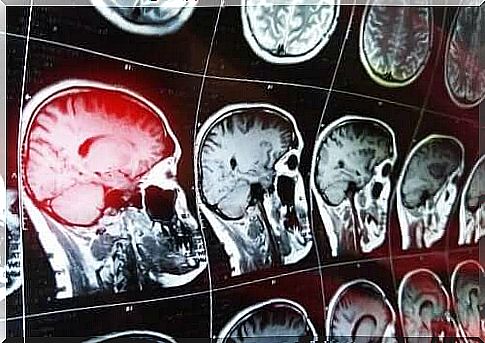What Are Confabulations And Why Do They Occur?

It is important to know that confabulations stem from the distortion of memories in order to understand what they are. This is because memory is one of the most studied in human cognitive processes. It is still a complex subject.
Events in memory are not exact events of events. Each individual can remember an event in a different way and assure that it was exactly as it happened. It is a deformation of reality due to loss of information.
A clear example occurs in older people who have major neurocognitive disorder (senile dementia). They are convinced that they have experienced something in a completely different way than the actual events.
Types and classification
Confabulations are a cognitive phenomenon that is difficult to typify, given that they can manifest in several ways. However, there are five criteria for classifying these cognitive changes.
Let’s take a look at them.
Spontaneous confabulations
This first type of confabulation is short. It is an imaginative idea confirmed as real by a given person, in a clear way. This usually occurs in patients with Korsakoff’s syndrome.
Provoked provocations
What happens in this case is that the memory does not evoke anything accurate. It is common in people with memory loss. Something similar happens when a healthy person tries to memorize information in a forced way for long periods.
For example, studying for an exam in a textual way can lead to errors in the recall memory. Some concepts can be exchanged and claimed to be true at the time of the exam, even if they do not correspond to reality.

Simple provoked disturbance
These distortions appear when a person needs to remember the information in detail. Let’s imagine for a moment that you forget the shopping list at home and try to remember what it said. You can subconsciously buy something that was not on your list, and yet you are convinced that it was.
Instantaneous confabulations
This type of memory failure is the most common type of confabulation, and the stories can be wonderful, but completely believable.
Furthermore , these are easier to detect. For example, when a patient talks about their plans in detail, but these are not feasible at all. It is common in nursing homes when some older adults claim that they want to visit childhood friends, even though they may already be deceased.
5. Wonderful confabulations
This type of confabulation is the most intense due to the high detachment from reality these people present. As the name suggests, these are wonderful stories that are only believable to the patient. These changes in reality are also common in psychotic patients and those with paralytic dementia.
Another classification
This classification of the five types seen above has been proposed by Kopelman and is the most accurate in determining the intensity and frequency of confabulations. Another method that has been used over the years is the one proposed by Schnider, which consists of four criteria:
- Contents. To determine how likely memory can be by using boundaries from true to false.
- The mode they appear in. Are they spontaneous or provoked?
- The terrain they appear in. Are they episodic, autobiographical, general semantic or personal semantic?
- The clinical syndrome in which they occur.
What symptoms are related to confabulations?
The symptomatology of confabulations varies depending on the underlying disorder causing them. For example, the most characteristic symptoms of Alzheimer’s disease are cognitive deficits, mental decline, and memory problems.
Let’s see what others may show, depending on the neurological disorder:
- Dementia is about memory loss with nervousness
- Schizophrenia is a thought disorder, acoustic hallucinations and paranoia
- Korsakoff’s syndrome is the loss of recent memories, mania and repetitive behavior
- Asomatognosy is the inability to integrate or recognize one’s own body parts, there are false emotions associated with the loss of a limb
The possible causes of confabulations
The causes of memory loss that cause confabulation in patients are a result of damage to the frontal area of the brain. In particular, the affected area is the basal prefrontal area, where the orbitofrontal cortex and ventromedial cortex are.
There are three theories that try to explain the reasons why confabulations occur. We will now look at who they are. This is because it is important to know about the hypotheses that come from a neuropsychological perspective.
1. Memory dysfunction
This theory states that confabulations are a form of memory loss. Furthermore, the main postulate believes that errors in memory are a way to give meaning to incomplete memories that can be retrieved. There is general approval for this hypothesis.
2. Executive dysfunction
This theory states that memory deficits that give rise to confabulations occur when there are severe mental limitations when it comes to planning and setting specific goals.
3. Double hypothesis
In this hypothesis, the approach does not exclude any of the earlier postulates. In fact, it claims that confabulations are due to a deficit in executive processes (higher consciousness functions), in addition to memory failure.
Treatment

Confabulations are considered an untreated side effect, although it is an approach that can improve the quality of life of patients who confab after suffering a brain injury. For this reason, this neuropsychological procedure is based on confrontation as a means of cognitive stimulation.
Researchers at the University of Granada designed this treatment. It consists of showing a series of pictures to the patients. The order of the series can vary in content, and then the researchers ask them to remember what they saw. Confabulations occur when these people try to remember, and this is when the specialists interpellate.
They must emphasize to the patients that the memory they claim to be true is not, and then they show the pictures again. Of course , they explain to them that their memory is failing, referred to as feedback in neuropsychology. One can expect an improvement after about nine weeks.
What to do if you know someone who is confabulating
The best thing you can do is not suddenly insist that a person is wrong if you know someone who can confabulate. You have to remember that these facts are real to them, so show empathy and avoid stressing them further.
The next thing to do is consult a specialist who can evaluate them and determine the intensity of the injury to determine the route to be followed. Some patients stop confabulating after a while and do not need to be hospitalized.









